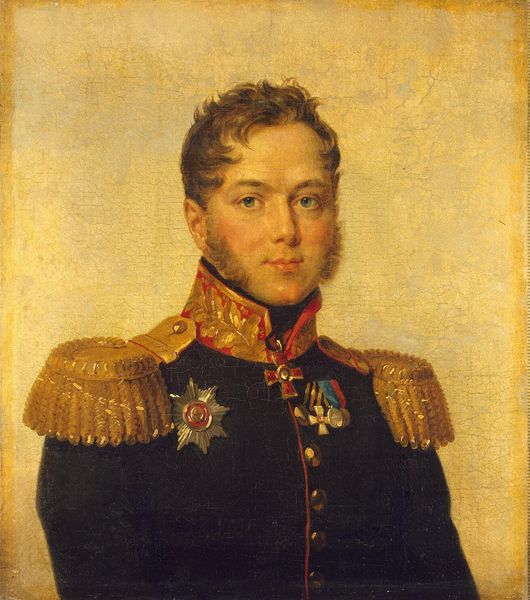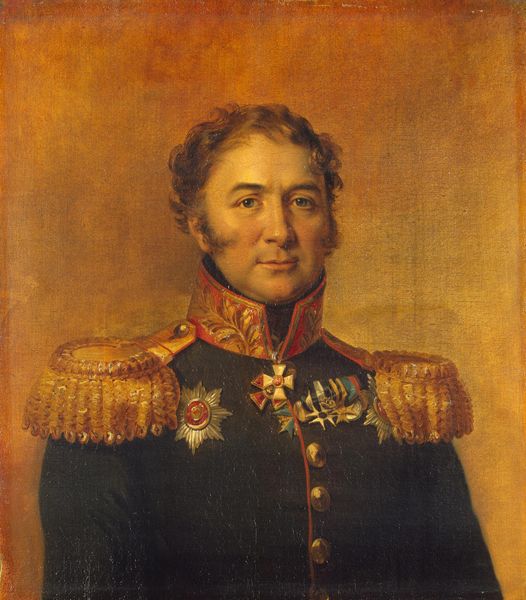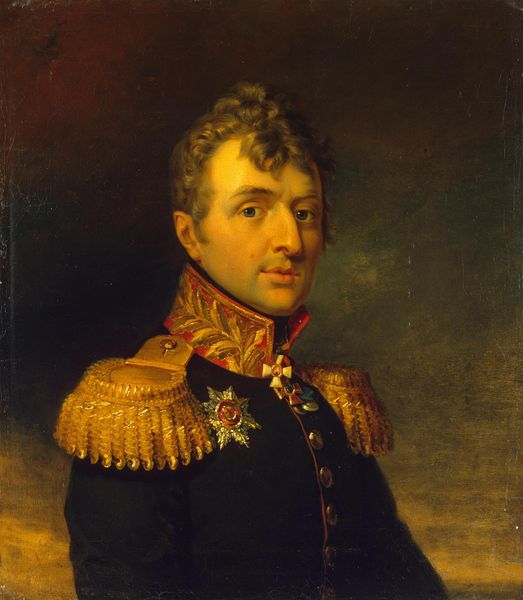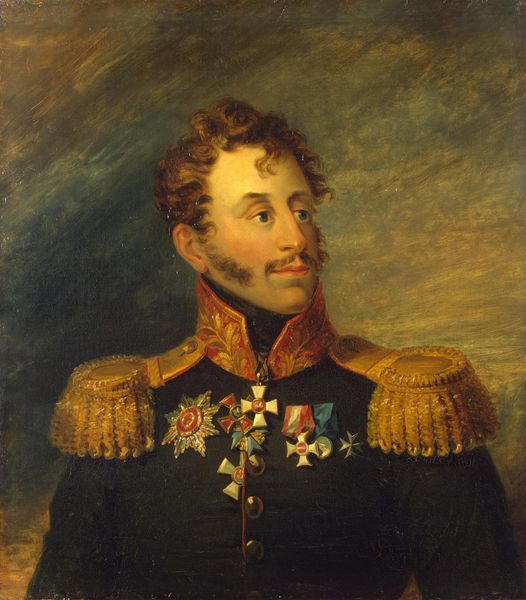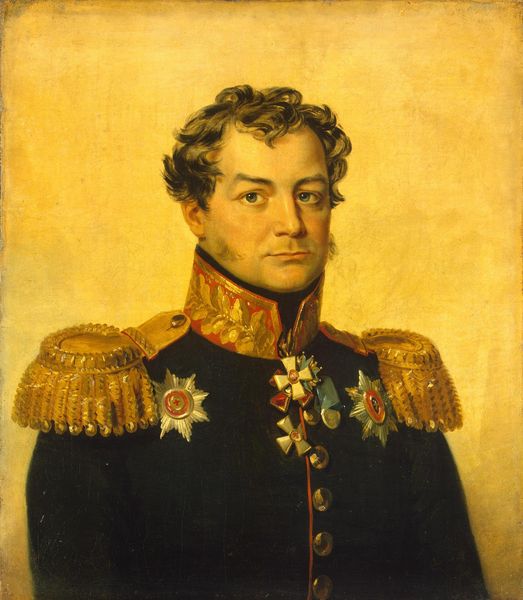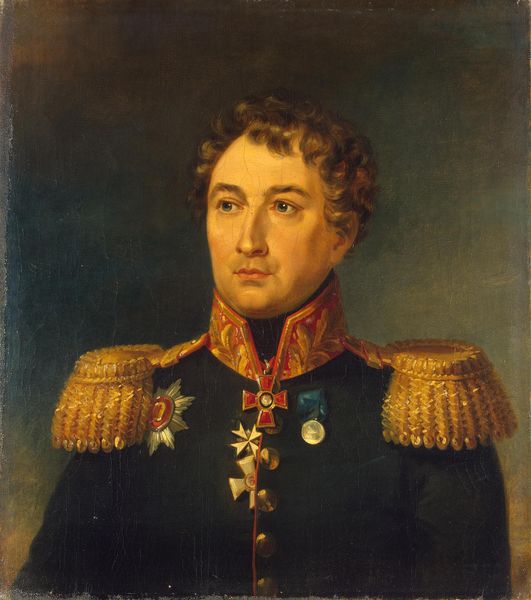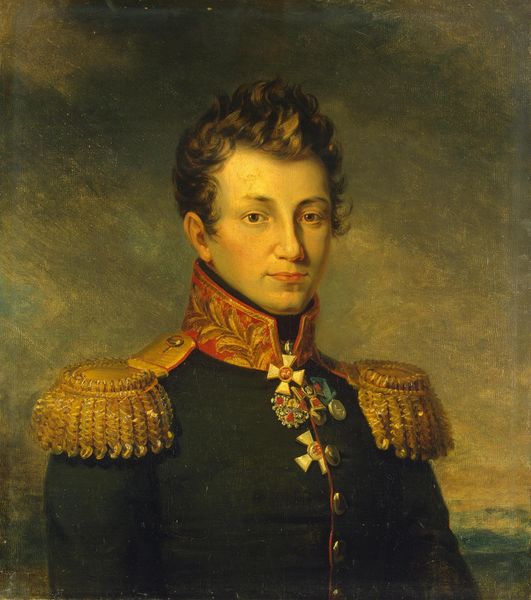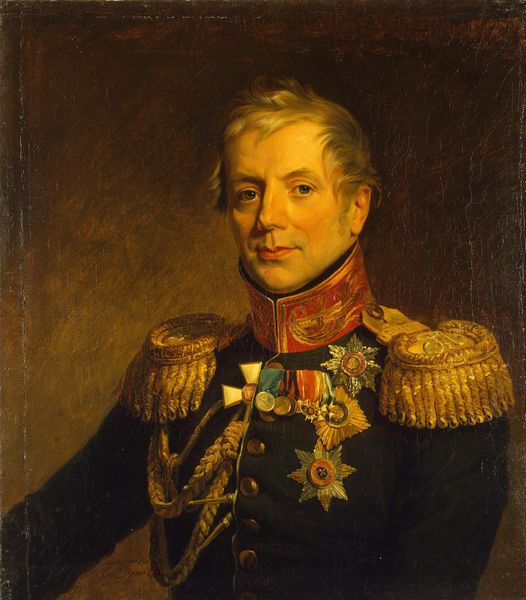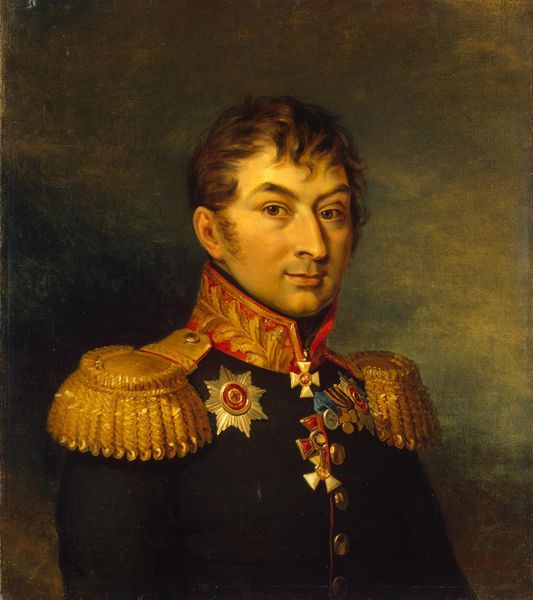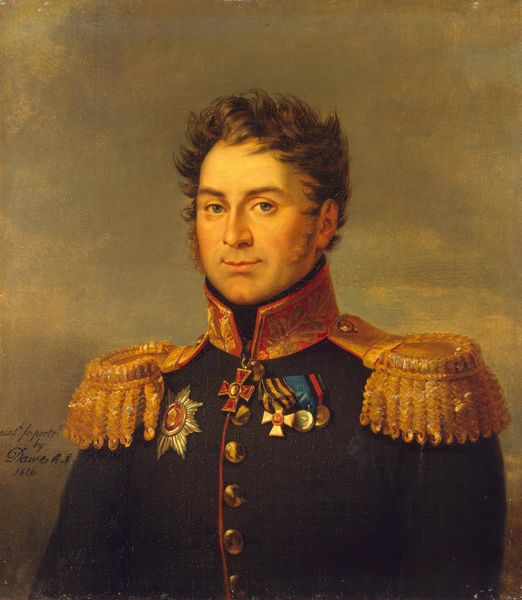
painting, oil-paint
#
portrait
#
painting
#
oil-paint
#
romanticism
#
portrait drawing
#
history-painting
#
academic-art
#
portrait art
#
realism
Copyright: Public domain
Curator: Here we have George Dawe's portrait of Dmitry Petrovich Lyapunov, a Russian General, painted in 1825. A formidable man, immortalized in oil paint. What do you notice first? Editor: The vibrant, almost theatrical red backdrop contrasting with the subdued palette of his uniform immediately grabs my attention. It's quite a formal composition, focusing predominantly on Lyapunov's bust. Curator: The romantic era was fascinated with portraying military and political figures. But who was Lyapunov outside of the Russian military machine? His life intersects with important geopolitical upheavals like the Napoleonic wars and the rise of Russian nationalism. His very existence as a soldier is intrinsically tied to global power structures. Editor: Certainly. And the composition, dominated by a stark frontal view, pushes all the structural components into the realm of symbols. Those meticulously rendered epaulettes suggest military authority, each thread a careful construction. And those are not merely decorative medals. Curator: Those awards signified exceptional merit and bravery within the tsarist imperial hierarchy, representing service, class, privilege, and the power dynamics of the Russian Empire. I am struck by how they function in their historical moment as representations of status and national pride, whilst equally alluding to the potential oppressions exacted via imperial actions. Editor: Interesting how that crimson drapery frames Lyapunov, isolating him in a visual theatre of power. Observe Dawe’s employment of light. A clear and rather diffuse lighting source illuminates his subject directly—his eyes appear almost radiant, while the mouth seems fixed. What do we gain, looking at the piece from today’s viewpoint? Curator: I think we should question the mythologies inherent in portraits such as these. Portraits, and depictions of military men specifically, serve to construct and preserve particular narratives. We need to think critically about whose stories get told and remembered, and, ultimately, who is left out of the historical record. Editor: Precisely, it reveals the interplay between structure, style, and the overarching cultural milieu that birthed this aesthetic ideal. Curator: Thank you for sharing that astute analysis. It truly does bring fresh perspective to this historic painting. Editor: Likewise. There's so much to unravel when form and context collide.
Comments
No comments
Be the first to comment and join the conversation on the ultimate creative platform.
